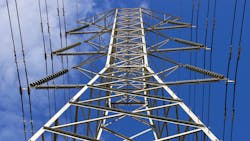Do the Right Thing for the Integrity of our Power Grid
My wife and I went to see Oppenheimer recently. Not a movie spoiler, but when nuclear physicist David L. Hill (played by Rami Malek) testified to Congress regarding the nomination of Lewis Strauss as United States Secretary of Commerce, he was asked why he was testifying at the risk of his reputation in the scientific community. His answer was, “It is the right thing to do.” My wife poked me in the ribs as she knows I strive to live similarly.
It is no secret that we have some problems with our electric grid. With sensitivity to many in our industry that have faced and are currently facing issues that I will not delve into here, the structural integrity of our grid has known weaknesses. Just last week, our home was without electricity for more than 24 hours after a reportedly 60-mph straight line wind storm front. Of the meters served by my co-op, 54% of were out of service for one to four days. As an engineer who always plans for contingencies, I have a generator. I greatly applaud the linemen that were able to restore such a major outage in my region within a relatively short time. But what about those without generators who must go for days without electricity? Customers ask why it takes days to get their electricity back on and why it went out in the first place as there was no single catastrophic weather event such as a tornado or ice storm.
So why do we continue to have so many outages? Many will argue that all outages are due to vegetation. Yet I have seen millions even billions of dollars spent on vegetation management effort, which I agree is a very good investment. Many are doing what I call "scorched earth" clearing, which basically clears everything to the ground for the full right of way width. So why do we continue to see poles and other structures that fail when no tree is in sight? Should we not make the same investment in the structural strengthening of our physical grid infrastructure?
The American Society of Civil Engineers (ASCE) has an overall standard (ASCE 7-22) that develops wind, ice, and other meteorological loadings for buildings and other structures. These loadings are primarily intended for structures that people live in, work at, or commute on. Some have suggested that our overhead electric infrastructure should meet these same loadings. However, to design our electric grid so that there are hardly ever any failures would be excessively expensive. Our industry focuses on resiliency which is the ability to ‘bounce back’ quickly as this is more cost effective.
As such, ASCE has another Manual of Practice (ASCE 74-19) that is specifically tailored for overhead line loadings. This manual takes the significant meteorological research and data in ASCE 7 and adopts it specifically for use on overhead lines. Rather than a 3000-year MRI that ASCE 7 says to use on "power facilities," ASCE 74 uses a more realistic 100-year MRI for the overhead lines.
At the request of many inside and outside of our industry, the effort is well underway to take Manual of Practice 74 into the present as a new ASCE Standard. It is too premature to divulge the details of its development in the committee at this time, but it is safe to say that there are obviously respectful differences of opinions on where it should land. Do we make no changes? Do we continue to design our distribution grid using loadings that have not changed in 82 years? Do we go to the other extreme and gold-plate all of our overhead line grid? The answer is obviously somewhere in the middle.
When this Standard is published, we will not be rebuilding our entire grid; instead, any new or replacement construction should follow these higher standards, as well as when additional infrastructure is added to existing structures. It will take a generation before we see the benefits of such a change.
As this standard is developed, I simply ask that everyone "Do the Right Thing." First, recognize that vegetation does not cause all outages. Also, recognize as we design our grid to loadings that are expected to happen like wind and ice, the grid will be much stronger even with vegetation events.
Let’s all be like nuclear physicist David L Hill, and at the risk of potential scorn of our employers, clients and some others in our industry who do not want change, Do the Right Thing for the integrity of our grid moving forward.
Otto J. Lynch is vice president of Bentley and Head of Power Line Systems. He is a member of American Society of Civil Engineers, IEEE, and National Electrical Safety Code. He is a registered professional engineer.
About the Author
Otto J. Lynch
Otto J. Lynch is president and CEO, Power Line Systems. He is a member of American Society of Civil Engineers, IEEE, and National Electrical Safety Code. He is a registered professional engineer.
